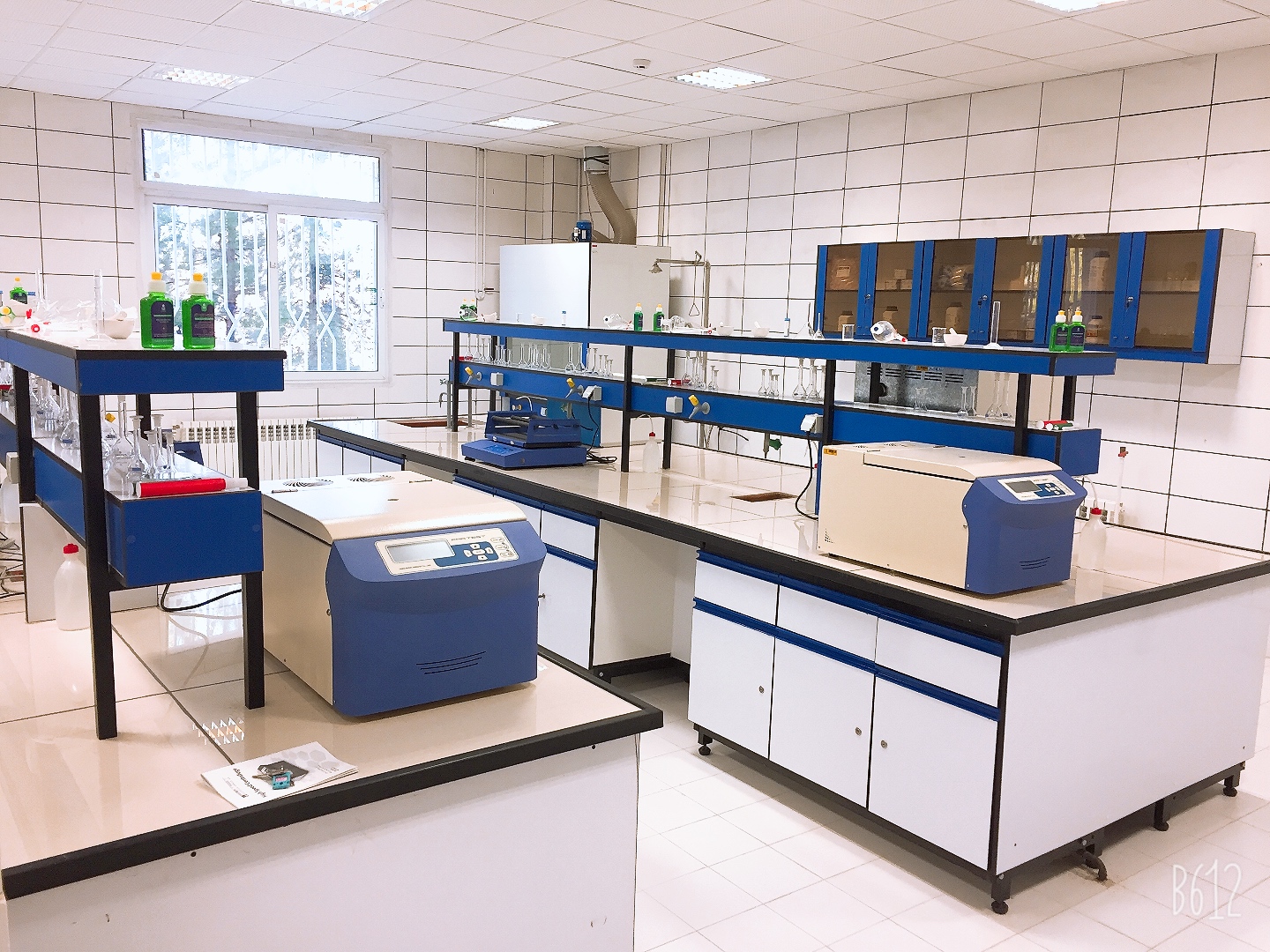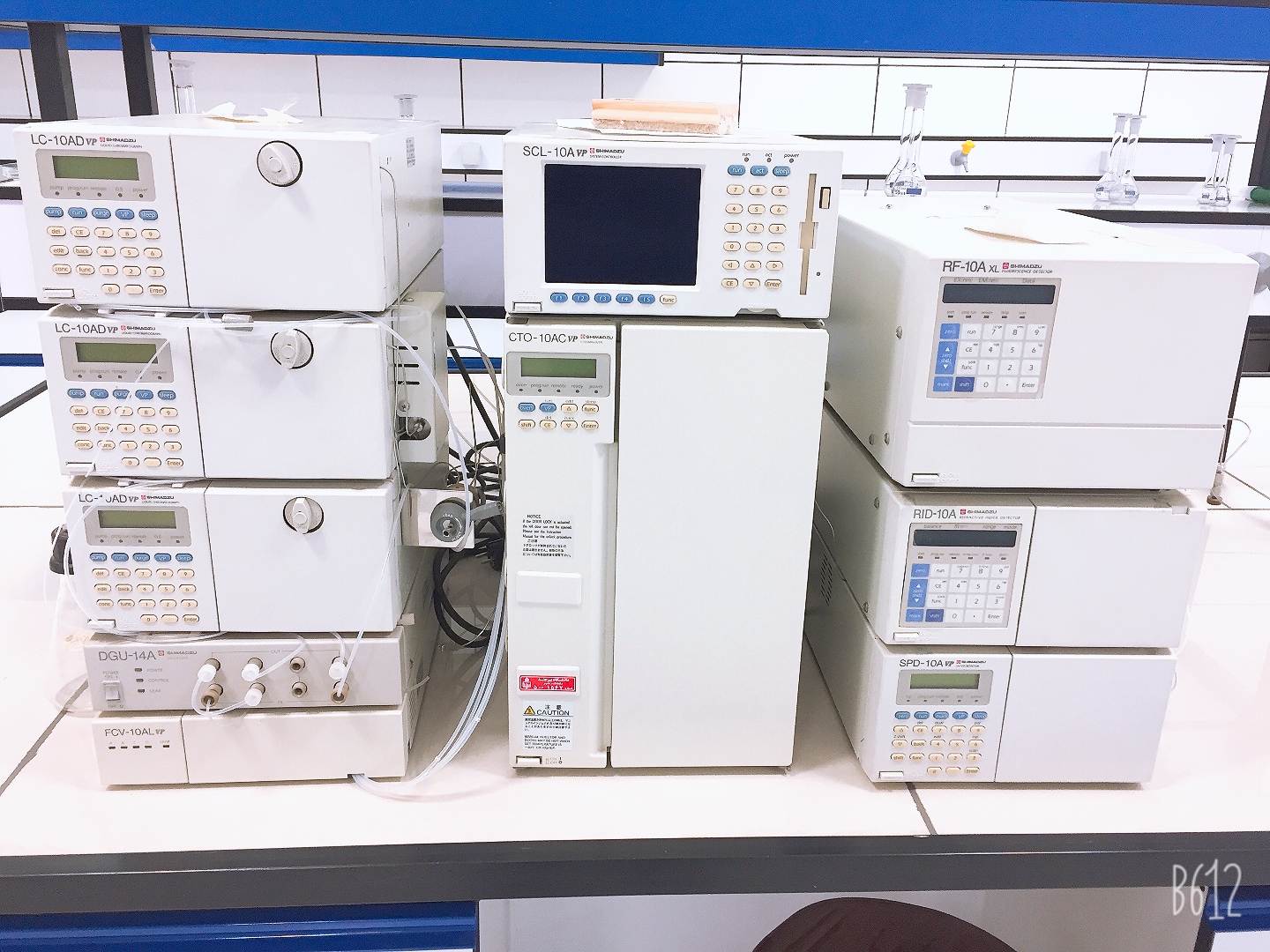Central Laboratory

The Central Laboratory at the University of Birjand has been established with the aim of centralizing and organizing advanced laboratory facilities and equipment, optimizing the use of available resources at the university, fostering greater interaction among researchers, providing access to faculty members, and preventing the monopolization of equipment. The laboratory is being managed under the supervision of the Vice President for Research and Technology affairs at the University and, following specific regulations, it provides scientific services to all subsets of the University as well as other scientific and research institutions, industries, and private sector.
“The Central Laboratory at the University of Birjand, equipped with advanced facilities, is located at the front of the administration office at the end of Daneshgah Boulevard, Shokat-Abad Campus, in the city of Birjand. The laboratory›s building comprises six comprehensive laboratories; including, Sample Preparation Laboratory, Instrumental Analysis Laboratory, Environmental Pollution Laboratory, Spectroscopic and Physical Analyses Laboratory, Dimensional Measurement Laboratory, Surface Chemistry and Thermal-Polymer Analyses Laboratory, Microscopy Laboratory, and Descriptive and Optical Mineralogy Laboratory. Each of these laboratories is equipped with advanced equipment related to various academic and industrial fields and is ready to provide services to students, faculty members, industries, and private companies. To this end, this center has created https://labs.birjand.ac.ir, which facilitates service requests and improves the quality of services for our respectable customers; therefore, they can bene it from the invaluable services of the Central Laboratory, University of Birjand by entering the above-mentioned website andrequesting their desired service.
List of laboratories and services provided at the Central Laboratory
1. Sample Preparation Laboratory:

This laboratory is equipped with various equipment for preparing samples for subsequent analyses.
Sample Preparation Laboratory Equipments:
2."Laminar Flow Cabinet" Instrumental Analysis Laboratory:

This laboratory is equipped with advanced laboratory equipment that perform the analysis, decomposition, and interpretation of samples.
2.1. High-Performance Liquid Chromatography (HPLC) Instrument:

This instrument is used for separation, identification, and quantification of various components of a compound. Examples of these compounds include; amino acids, proteins, nucleic acids, hydrocarbons, carbon hydrates, drugs, terpenoids, insecticides, antibiotics, steroids, and various minerals.
2.2. Liquid Chromatography Mass Spectrometer (LC/MS):
The Liquid Chromatography Mass Spectrometer is a combination of a mass spectrometer and a liquid chromatograph. It identifies and analyzes compounds with significantly higher speed and sensitivity. This instrument is used for the decomposition and analysis of large and non-volatile molecules such as proteins and complex peptides.
2.3. Atomic Absorption Spectrometer (AAS):
This instrument is used for determining minimal amounts of metals in liquids and alloys, and impurities present in them. It is also used for environmental pollutant analysis (water, air, and soil), studying the impact of various elements in the environment, and analyzing metals and semi-metals in natural and synthetic mineral compounds.
2.4. Inductively Coupled Plasma Optical Emission Spectroscopy (OES-ICP) Instrument:
OES-ICP is one of the most important instrumental methods for elemental analysis. This method can be used to measure about 70 elements from the periodic table in various samples such as soil, water, metals, ceramics, and organic samples.
2.5. Water Analyzer:
This instrument has the capability to measure the following parameters in water: nitrate, nitrite, fluoride, chloride, phosphate, sulfate, magnesium, calcium, ammonia, sulfide, sulfite, potassium, sodium, cyanide, detergents, fats and oil, total alkalinity, TOC, COD, arsenic, lead, mercury, cadmium, and E. coli bacteria.
2.6. Other Laboratory Equipment:
3. Spectroscopy and Physical Analysis Laboratory:
This laboratory is equipped with three instruments: XRF, XRD, and VSM. These instruments provide services such as studying the magnetic properties of materials, determining the structure and amount of elements present in minerals, rocks, and soil.
Spectroscopy and Physical Analysis Laboratory Equipments:
3.1. X-Ray Fluorescence Spectrometer (XRF):
Instrument Name: Skyray Instrument (H3600EDX)
This instrument measures the elements present in solid and powdered samples quantitatively and qualitatively (sample amount should be more than 1 gram). Compared to conventional methods, this method offers higher accuracy and speed at a lower cost. The applications of this instrument include mineral research, geology, cement industry, ceramics, glass, environmental studies, and oil and petrochemical industries.
3.2. X-Ray Diffractometer (XRD):
Instrument Name: PHILIPS (1830)
This instrument exploits an old and widely used technique for studying the properties of crystals and other samples. In general, XRD can be used to determine the quality of unknown materials and the quantities of crystalline structures.
3.3. Vibrating Sample Magnetometer (VSM):
This instrument is generally used for studying magnetic properties. It provides services such as measuring the magnetic remanence loop/hysteresis and determining magnetic quantities including saturation magnetization (Ms), remanent magnetization (Mr), and coercivity (Hc).
4. Dimensional Measurement Laboratory
This laboratory is equipped with two advanced instruments that offer services such as three-dimensional and precise dimensional measurement, part scanning, and hardness testing.
Dimensional Measurement Laboratory Equipments:
4.1. Three-Dimensional Scanner (Steinbichler):
This instrument is capable of measuring all parts in different dimensions and sizes (from small to large) and in different materials and colors.
4.2. Three-Dimensional Measurement Device (CMM):
These are very powerful dimensional measurement equipment that can be used to obtain the complete three-dimensional coordinates of a part.
5. Surface Chemistry and Thermal-Polymer Analysis Laboratory
This laboratory operates in the field of polymer synthesis, nanoparticles, and nanocomposites. It is equipped with two instruments for particle size measurement and specific surface area measurement. These instruments, which accurately measure surface area and porosity, are of high importance in many applications such as catalysts, nano-absorbents, compounds and additives, pharmaceuticals, and food industries, as well as in nanostructures like metallic nanoparticles, nanotubes, nanofibers, and others.
5.1. Specific Surface Area Measurement Instrument (BET):
This instrument performs analyses based on physical or chemical absorption and also temperature-programmed techniques. These techniques are used in determining the characteristics of catalysts, nanocatalysts, nano-absorbents, nanofilters and membranes, nanofibers, nanotubes, and thin layers.
5.2. Particle Size Analysis Instrument:
This instrument measures particle dimensions and distribution of particle sizes ranging from 1 nanometer to 9 micrometers.
5.3. Differential and Scanning Thermal Analysis Instrument:
This instrument, which performs thermal weighing analysis, determines the percentage of different materials present in the sample. Thermal analysis is a method for obtaining qualitative and quantitative information about the effect of heat on various types of materials, including chemical compounds, polymers (elastics, plastics, and composites), ceramics, alloys, minerals, food, and drugs.
6.Microscopy Laboratory:
This laboratory is equipped with four microscopes: atomic force microscope, scanning tunneling microscope, sputtering coater, and contact angle measuring instrument. These instruments provide services such as particle analysis including size, number, morphology, and size distribution for solid and powdered materials. They also create nanometer layers, capture images of material surfaces, and examine their porosity.
6.1.Atomic Force Microscope (AFM):
This instrument is used for imaging and examining various samples, especially insulating and biological ones, utilizing its high-resolution capabilities and without the need for complex preparation. It also allows for the creation of three-dimensional images and the examination of surface topography.
6.2. Scanning Tunneling Microscope (STM):
This microscope is a tool for imaging surfaces at the atomic scale. With this microscope, the arrangement of atoms on the surface can be visualized. The scanning tunneling microscope can also be used for atom-by-atom construction (atomic manipulation). For this purpose, very sharp needles are used.
6.3. Surface Contact Angle Goniometer (CAG):
This instrument is used for measuring static and dynamic contact angles. By using it, the wettability of the surface can be evaluated and the quality of surface properties of coatings can be assured.
6.4. Tabletop Sputtering Instrument:
This instrument, equipped with a layer deposition system in vacuum, is used for creating nanometer layers and establishing very delicate electrical connections in the field of nanotechnology and microelectronics. The primary application of this instrument is as a coating instrument for insulating samples for observation with an electron microscope (SEM).
